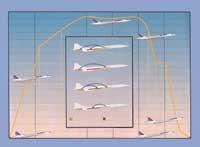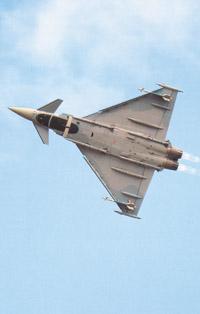As curious as birds
2000/05/07 Kortabarria Olabarria, Beñardo - Elhuyar Zientzia
Blackburn B-20

This water plane was technologically too advanced for its time, the beginning of World War II. With the retractable helmet the wings were further away from the water. In view of the project, the British air navy authorized the construction of the prototype, but with the order to install the Rolls-Royce Vulture engine. This greatly conditioned the availability of the Blackburn B-20. In test flight the retractable hull passed the test, but one of the eaves failed and the prototype fell to the sea. The adventure ended there.
Cornelius XFG-1
Its function was to supply fuel to pump launchers. It was driven by a cable that connected with the pump launcher and the autopilot, although it could also drive differently. The glider was full of fuels and the fuel was supplied by gravity to the pump launcher, which was always above him. At the end of the fuel was released and lost. It was tested by the United States in 1945. The planner fulfilled his task perfectly, but he had no future, since at the end of the war the concept of fuel planes had been put aside.
Curtiss-Wright CW 21 Demon
I wanted to be a fighter plane, but it was quite poor. It was launched on the market by the American aeronautical company Curtiss, but it was not successful. However, the Chinese bought the prototype and three other planes. They did not arrive in China, as when they were crossing Burma they were beaten with a mountain and lost there. The Dutch also bet on this hunt against the Japanese in Indonesia. On 8 December 1941, the Dutch had 17 Curtiss-Wright CW 21 Demon; two months later, only 5 remained because the Japanese threw them as if they were paper. The story of this plane ended in Cuba, where he was trained, and in Peru, which was used in the war against the Equators.
D'Equevilly
After seeing Brother Wright, more than one thought: "If they are enough to fly one or two wings, with many wings the flight will be better." One of them was the Marquis of Equevilly in France. The frets had wooden structure and three-cylinder engine. The metal propeller was moved by a chain. The driver sat in the middle of the wooden structure. He could not take off.
Fairey Battle

This plane, launched by Royal Air Force in 1936, aroused an enormous expectation for its enormous capacity for the time, with a load of 455 kilograms and a autonomy of 1.448 kilometers. In addition, the design was excellent. In view of this, they did not put too many weapons for defense, since they had a lot of confidence in speed, 388 kilometers per hour. In 1939 the British learned about the development of German planes, which instead of adapting to the time increased their production. Fairey Battle was very big, but 3 years before the plane could be the king of the heavens, 3 years later he was not able to escape the German planes. 40 of the 71 Battles that participated in the Battle of Sedan were knocked down to the ground. In view of this they were rejected.
Related information

The Japanese used the first gun autospin. This observation oriented autogiro was designed in the 1930s by the Japanese company Kayaba. He made his first flight in 1941. The Japanese made some 240. They were mainly used in aviation ships to observe submarines from the air.
Nord 500

This plane had a curious design! In this plane made by France, in addition to the appearance, the modern concept of flight called attention: take off and vertical landing. The air coming out of the engine was heading toward the ground, so the plane ascended. Two prototypes were made, one in 67 and the other in 68 and both were tested. The plane took off, but always tied to the ground. The project was suspended for a change in French government policy.
United States
It was an engineering failure at the base of this plane, with the success of the F-84 of the Americans. The end of the basic rope was extended, the three-arm propeller was placed on the front, the length of the plane was increased but the size of the wings was reduced... all in order to test the turboprop technology. The results were very scarce: the propeller made a lot of noise, 11 of the 12 flights that were carried out ended with the emergency landing, the military did not want to participate in the flights and the drivers of the company Republic had to do them, they achieved very small speeds…, they abandoned them in the 50's after a lot of money.
TT-1 Pinto
This plane was the result of a competition held in 1956. The aim of the competition was to make an airplane to train before catching the fighter planes. Therefore, it was the first reactor for training. Unfortunately the design of the Pino was very advanced for the time and was discarded. A decade later, in 1978, the Philippine army acquired the prototype, the plane itself, design rights, marketing rights of the plane and planes. The Filipinos changed his name, from then on it would be Cali. It seemed that he could have a good future, starting the aeronautical industry in the Philippines, but when dictator Marcos was expelled from power, the future of Cali went bankrupt.
Veb 152
This aircraft was built in East Germany, Dresden, in 1958. Evidently, it is of Soviet design. I wanted to be a fighter plane, but it seemed like a bomb launcher. The landing gear was similar to that of civilian aircraft, with a crystal at the end and a rather rare flight. Three months after the launch of the prototype tests falls to the ground and explodes. However, the aircraft designers would also manufacture a second prototype. He was only able to carry out two other flights. Therefore, the project was cancelled.
Published in 7

Gai honi buruzko eduki gehiago
Elhuyarrek garatutako teknologia





